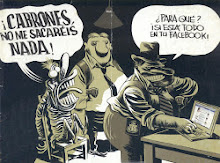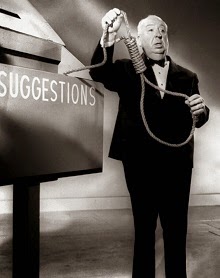Zack Smith
In 1952, author Jim Thompson introduced readers to a small-town deputy named Lou Ford who narrated the tale of how his friendly façade hid a dark side he called “the sickness.” That tale, The Killer Inside Me, proved a controversial classic. Stanley Kubrick proclaimed it one of his favorites, and worked with Thompson on the screenplays to his films The Killing and Paths of Glory. Numerous authors and musicians cited it as a major influence, from the Dead Milkmen to Bruce Springsteen to Frank Miller. It was filmed twice, and inspired countless knockoffs.
Now, The Killer Inside Me comes to comic books beginning this week in a new adaptation from IDW Publishing scripted by Devin Faraci and illustrated by Vic Malhotra. Faraci’s new to scripting comic books, but is a name many fans might know already from his work as editor-in-chief of the film siteBirth.Movies.Death and his backup articles on Hollywood’s dark side in Ed Brubaker and Sean Phillips’ The Fade Out at Image.
Newsarama spoke with Faraci about coming to comic books, the unique challenges of adapting Thompson’s classic, and just why The Killer Inside Me is still so shocking and compelling more than 60 years later.
Newsarama: Devin, the book’s been out since the 1950s, and filmed twice, and the subject of an MC 900 Ft. Jesus rap song, so asking “What’s the story about?” is a little redundant here. But for those who’ve never experienced it, what can you tell them about the grand depravity that is Lou Ford?
Devin Faraci: It’s a first-person story of a sociopath - the story of a deputy who is living a seemingly-quiet life in a small town, but who harbors inside of him this sickness, this desire to kill people. The book is, basically, about how he quietly and gently rationalizes killing as many people as he possibly can. And it’s a classic noir; so it’s got a little bit of a femme fatale thing happening, and that idea that everything he does makes everything a little bit worse - he keeps committing more murders to cover up the ones he’s already done.
Nrama: It’s funny, because I describe this character to people and they go, “Oh, its Barney Fife as a killer!” And really, Lou predates Barney by almost a decade.
Faraci: He predates so many things. A lot of the antiheroes we see on TV today - they have their roots back in Lou Ford. Jim Thompson makes you spend an entire novel in the head of a maniac, and you can’t help but like him a little bit. That’s sort of the dark magic of the book, and hopefully it’s something we capture in the comic.
The wonderful thing about revisiting The Killer Inside Me now is that it was so ahead of its time that it still feels current.
Nrama: That period of the 1950s is very interesting for noir and crime novels, because you have these works like Thompson’s that are about the depravity lurking beneath an idealistic surface, and meanwhile you have a country that’s post-World War II and trying to say, “everything is just fine.”
Faraci: At lot of what noir from that period, including The Killer Inside Me, is what you’re talking about - these guys had gone overseas for WWII, seen the worst things they had ever imagined, and then had to come home and live in the real world again.
You have that - that coming home to pay the bills and be caught in the surreality of modern life with all that in your head, and more than that, you had men coming back from the “Good War,” the most righteous war we’ve ever been in, and they still felt hollow, like they weren’t the kind of heroes they were being acclaimed as. They knew what their experience was, which was terror and failure and watching their friends die.
On top of that, this was part of the Great Depression generation, who had sort of been raised to just take it, and push it down. So a lot of these feelings got internalized, and you see a story like that in The Killer Inside Me, dark feelings coming out in very terrifying ways.
It doesn’t specifically deal with those feelings – there is a vet character whom Lou hates – but that feeling does pervade the setting in its own weird way.
Nrama: There’s a wonderful monologue Lou has about three-fourths through the story that’s one of the most nihilistic perspectives of the world and humanity about ever seen, and that can be applied not just to someone like Lou Ford, but to anyone who’s been trying to keep up a cheerful face.
Faraci: I think what’s compelling about Lou Ford is that if you ran into him on the street, you’d think he was just another dummy, and that dichotomy is something a lot of people have – that false face we present to the world. Of course, it’s more extreme for him – he’s a psychotic killer! But for readers, you get to be inside the head of someone as he explores that dichotomy for himself.
Nrama: And again - this is about 40 years before Bret Easton Ellis doesAmerican Psycho, to say nothing of the film, or of Dexter.
Faraci: Exactly. All these stories we’ve had with killers as protagonists, none of them, I think happen without The Killer Inside Me.
It’s kind of crazy that this is my first time writing a comic book, and it’s adapting one of the great novels of crime literature of all time. [Laughs] It’s a big responsibility.
Nrama: You’ve done those backup articles in Ed Brubaker and Sean Phillips’s books, and have a presence online already, but I was curious about how you came to work with IDW on this.
Faraci: I know Ed, and Ed tapped me to write the backmatter for The Fade Out, and that was a perfect thing for me – getting to write about that period of filmmaking. It was mind-blowing, getting to do something in comics, having been a fan of them all my life.
I do a podcast called “The Canon,” and it turns out that Chris Ryall at IDW listens to it, and heard me mention I love Jim Thompson, and they’d just gotten the rights to The Killer Inside Me. And he called me, and I went, “Wow, yes!”
It was an opportunity that terrified me, and that’s why I had to do it. It was the opportunity to live out a dream, and a perfect melding of material and my sensibilities. I owe Chris for this - I’m forever indebted to him.
Nrama: In adapting the book, there’s a lot to translate visually - the characters, this setting, the narration, and the fact that most of this takes place inside the character’s head, and is sometimes not terribly reliable. What was the actual process like of sitting down and making this into a comic book?
Faraci: Yeah, it was simultaneously some of the easiest writing I’ve ever done and the hardest writing I’ve ever done. Easy, because Jim Thompson’s already written a great story, you know what I mean? It’s all there already.
The part where it’s tricky is Jim Thompson is one of the great American writers, and his voice is very specific. And the first thing I learned is - you don’t get a lot of words when writing a comic.
Nrama: No, you do not. I have this conversation with literally everyone from another medium who goes into writing comic books.
Faraci: I’d grown up reading Chris Claremont comics, so I had this vision of tremendous speeches being delivered. And it turns out, when you want tremendous speeches being delivered, you have to clear out about two pages.
For aspiring comics writers - make Hemingway your hero. Learn to write as briefly as you can, shortest sentences possible! I can’t emphasize that enough.
So, that was the hard part - trying to come at the story in a way that still cuts material from one of the greatest books ever written! [Laughs] I hope anyone who enjoys this comic at all goes out and picks up the book, because the language of the book is just great poetry.
There are definitely chapters that could be whole issues, and with the first draft, I was super-precious about the words. As someone who’d never written a comic script before, I asked Ed Brubaker for advice, and he sent some of his scripts. And then I asked the editor for advice, and did more revising, and turned in the first draft - and what I got back was, “good, but there’s too many words.”
The biggest challenge was figuring out how many words I could use on the page while still maintaining enough room for the artist to do his thing. And I’m so lucky they hired Vic Malhotra, who is not just a great artist, but is a fan of the material.
Working with Vic is terrific, because I’ll write a thing in issue #1 that has to pay off in issue #5, and Vic knows the material so well that he’ll highlight the material that’s going to pay off, sometimes even better than I have in the script. He’s so good.
That’s maybe the most exciting part of writing comics - having this partner to work with. I’m a film critic, I’m used to writing solo. Here, we’re both living with the ghost of Jim Thompson, and know what we have to bring to it, and being able to work with this and have this kind of strong storytelling is a blessing.
Some of the content in this story is a little on the edgier side of things - you want to walk that line where you’re conveying them, but not in a way that feels exploitative. And there’s things Thompson writes that when you draw them in a panel come off as much more disturbing. I think Vic understands the balance very well, and what that line is.
In the first issue, Lou assaults a girl - that’s a tricky line. And Vic nailed it - you know what’s happening, but you don’t feel like something truly horrific is being rubbed in your face.
Nrama: That relationship is a key part of the book, but it’s very tricky to pull off, because it’s so based in sadism. It’s a man being truly violent and abusive with a woman who, from his perspective at least, seems to like it.
Faraci: Yeah, this is the tricky thing about telling a story like this in 2016. A lot of things that are kind of noirstaples just wouldn’t fly today. But at the same time, we’re adapting this novel, and we’re not sanitizing what Jim Thompson did.
At the same time, we don’t want to come off as though we’re being creepy… that we’re endorsing violence against women. Which was a problem with the more recent movie version, people really freaked out about the violence against women, and the film leaned on that, and we don’t want to go that direction.
Nrama: There was that more recent version, and another in the 1970s, and neither quite captured what made the book work, at least in my opinion.
Faraci: This is why this works better as a comic adaptation - like you said earlier, so much of the book is internal, and comics let you go more internal than movies. Unless you’re doing an endless voice-over, which doesn’t quite work in a movie, it’s just not the same.
The beauty of the comic is that we get to go further than Thompson did - you can have panels that depict things that go against what Lou is thinking. So you can visualize that aspect of the unreliable narration through the juxtaposition of words and pictures.
That’s a big part of what we’re trying to do in the book - without spoiling future issues, we’re trying to capture that dichotomy between what Lou sees and what’s going on in the world.
Nrama: That’s a staple of Thompson’s works - some even have extra editing to clarify what’s going on. But he’s so good at putting you in this place where reality becomes increasingly subjective.
Faraci: That’s the beauty of the novel - you can get about midway into it before realizing the character maybe doesn’t know what’s going on. And you can see that in the series as the story progresses.
Nrama: There’ve been some good films of Thompson’s works - The Grifters,After Dark, My Sweet - but sometimes they cut that unreliable aspect. There were two films of The Getaway, and neither really capture that toxic relationship and decay of sanity as the story goes on.
Faraci: I’d love to adapt The Getaway, if only because the ending of the book has never been captured in any of the movie versions, so it’d be great to do a faithful version of this story. Maybe if this sells well enough, IDW will let me do that! It’s so weird and surreal you could get a whole comic-book universe out of that.
I like the Steve McQueen The Getaway - it’s not the novel, but it works as its own thing, as a Sam Peckinpah movie. As a comic writer, I want to get a little bit closer to Thompson’s original intent.
Nrama: You mentioned The Getaway; are there any other works by Thompson or crime fiction you’d like to see adapted into comic-book form?
Faraci: I think you could get a whole bookshelf of Thompson adaptations - there’s enough of a level of stylization that different artists could do all kinds of fun things with the material.
Having done my first adaptation, the rigors of that were so specific that I think I’d have to go back to my favorite books with a different eye before I’d say, “That should be a comic!” Things I thought would be easy to get across were very difficult, and things I thought would be impossible actually flowed like magic.
This process has changed the way I see so many things, including some of my favorite works of fiction.
Nrama: Funnily enough, I got into Thompson because of comic books – the original Sin City came out when I was in middle school, and Thompson was cited as an influence, and that led to my seeking out Richard Stark, Raymond Chandler, and James M. Cain. But Thompson was so impressive because he really introduced me to how the pulp and the literary could be combined.
Faraci: I’m not on the Frank Miller hit list, but Sin City is not nearly as good as Thompson’s work, and that’s because Sin City doesn’t have the psychological depth that Thompson has in his work. Sin City has a great surface-level cool that’s very similar to the violence and darkness of Thompson’s work. But the best crime fiction is about the psychology of the characters, and Thompson’s stories are full of great characters, and their psychology is bizarre and interesting.
That’s why crime fiction makes for great comics - comics are character-driven, and you keep reading a comic because you’re interested in the characters, hopefully. So I think it makes sense to pursue as many crime stories in comics as possible.
Nrama: What are some of your favorite comic book?
Faraci: I feel like I have really basic taste! [Laughs] My top five off the top of my head, and people can feel free to yell at me for this: I think The Invisibles is one of the most important works ever,Age of Bronze is an incredible case of adaptation and making it your own, I am forever and ever a Spider-Man guy, with “The Death of Jean DeWolff” a favorite… I don’t want to kiss Ed’s ass too much, but Gotham Central is one of the most overlooked comics of our era. And what Ed and Sean Phillips do on their books is always incredible.
Nrama: Anything else you’d like to talk about that we haven’t discussed yet?
Faraci: I want to emphasize how lucky I was to get Vic on this. I’d started writing this before he came on board, and once I saw what he was doing on issue #1, I tore up my script for #2 and started over, because I wanted to write more to his strengths. He’s so good, so visual, I feel like I’m just a stenographer between him and Jim Thompson. [Laughs] I really learned just how vital a good artist is thanks to him.
































.jpeg)








0 comentaris:
Publica un comentari a l'entrada